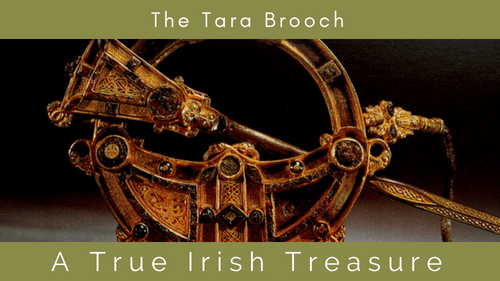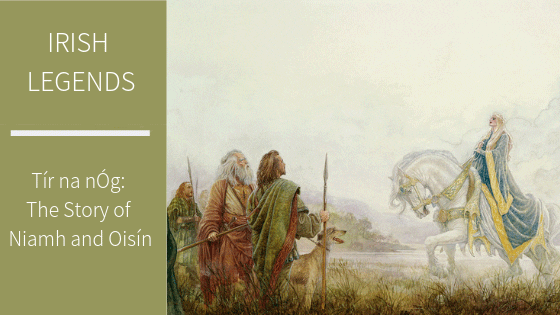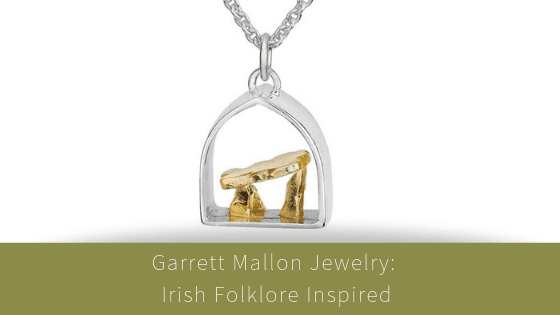The Tara Brooch was discovered in 1850. Since then it has become a world-renowned icon of ancient Irish design.
Fraught Origins
The Tara Brooch was discovered in 1850, just North of Dublin near the seashore at Battystown, County Meath. The name is misleading, as the brooch was not found near the Hill of Tara. Stories describe how two sons from a peasant family found the Brooch in a tin box on the beach. However, some historians posit that such a small box could not possibly survive centuries of harsh waves, shifting sands and erosion.
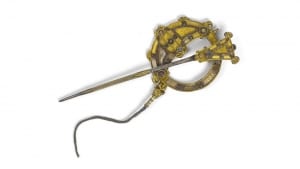
Another version tells how the two boys found the brooch further inland. Fearing the landowner would claim it, the pair snuck the brooch home to their mother. She then took it to an iron dealer who was quick to tell her that it was of no use to him. She then presented it to a watchmaker hoping who, after cleaning and examining it, determined that the brooch was made of silver and gold filigree and bought it immediately for 18 pence. The watchmaker then sold it to Waterhouse Jewelers for a profitable 12 pounds. At the time, the owner George Waterhouse was producing jewelry inspired by Celtic styles. When the brooch fell into his possession, he saw a tremendous sales oppurtunity and renamed it the Tara Brooch.
Gaining Fame on the World Stage
For the next 22 years, the Tara Brooch was the centerpiece of Waterhouse’s display in the Dublin shop. Word spread quickly about the beautiful brooch and visitors came from all over to view it. Queen Victoria wished to see it and requested for it to be sent to Windsor Castle for her to inspect. It was later featured in the Great Exhibition in London and the Exposition Universelle in Paris. In 1853, it was displayed in an exhibition in Dublin, where the Queen came to look for a second time. It was later acquired by the Royal Irish Academy and remains on display in the National Museum of Ireland in Dublin.
Dazzling Design
Experts have dated the brooch back to 700 AD. Crafted from silver-gilt and gold filigree, the brooch also features some colored glass as well as small amounts of amber and copper. Both sides boast elaborate motifs which are separated by studs of glass, enamel and amber.
The intricate designs include Celtic knots, triskeles, animal and human heads and geometric shapes. More than 20 representations of dragons and serpents are found throughout. The pins head starts as a golden nugget and molds into a dragon’s head. Unfortunately, some of the gold panels were lost along the way. Each element is perfectly executed and the detailed technique is exquisite for such a small object.
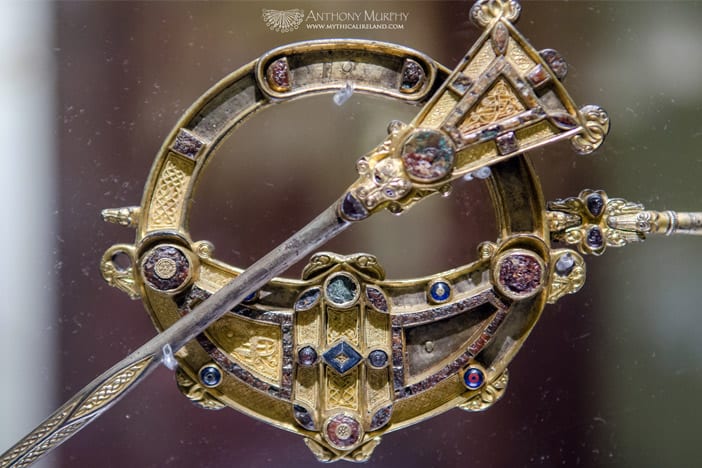
The Tara Timeline
1850 Found in Ireland most likely near Bettystown, County Meath
1851 Featured in the Great Exhibition in London
1853 Displayed in an exhibition in Dublin, where Queen Victoria came for a viewing
1872 Acquired by the Royal Irish Academy, organization responsible for setting up the National Museum of Ireland
Browse Our Selection of Tara-Inspired Brooches
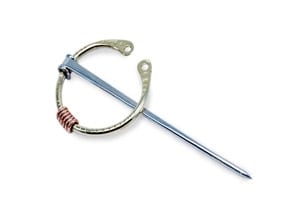
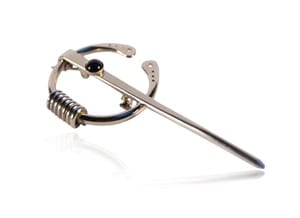
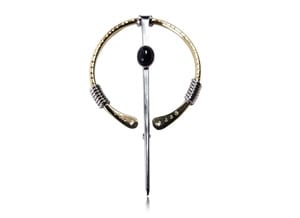
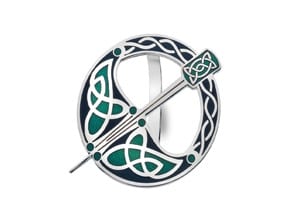
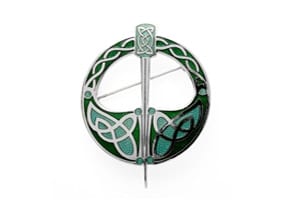
Header image courtesy of maryannadair.com.
